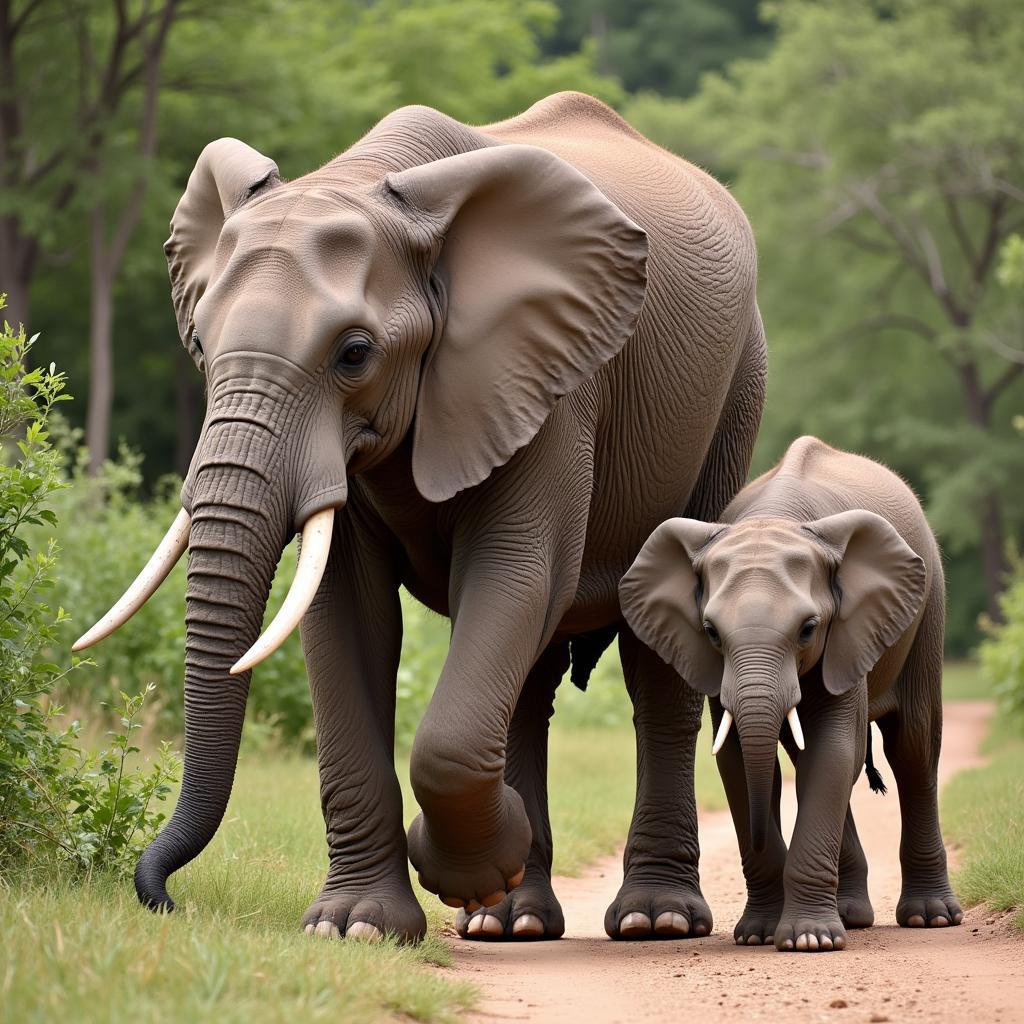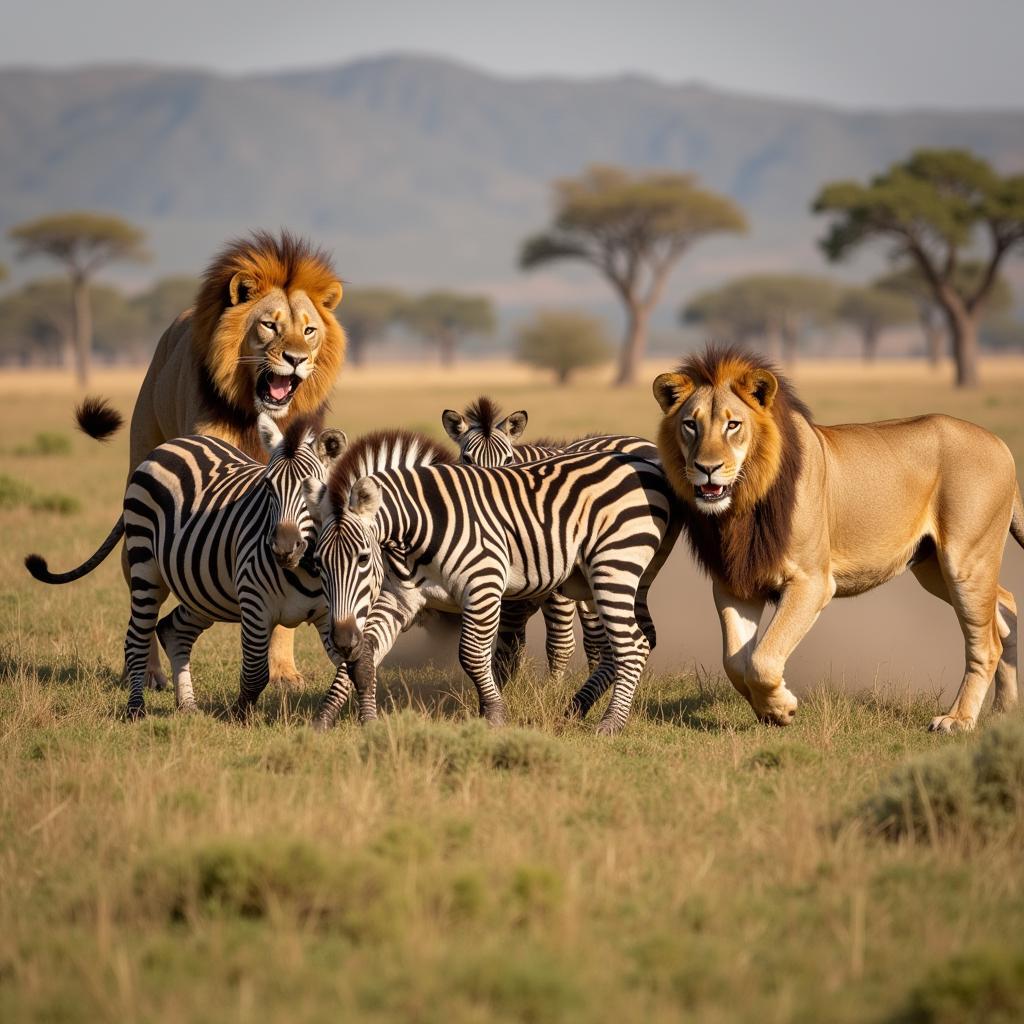The Majestic African Bush Elephant: A Comprehensive Guide
The African bush elephant, the largest land animal on Earth, roams the savannas and forests of Africa, captivating all who encounter its immense presence. From its complex social structures to its crucial role in the ecosystem, this magnificent creature holds a special place in the heart of Africa.
Understanding the African Bush Elephant: Size, Habitat, and Diet
African bush elephants, scientifically known as Loxodonta africana, are truly giants. Males can reach heights of up to 4 meters at the shoulder and weigh over 6 tons. Their large ears, shaped like the continent of Africa, help them regulate body temperature. These impressive animals primarily inhabit savannas, grasslands, and woodlands across sub-Saharan Africa. Their range extends from the Sahel desert in the north to the southern tip of the continent. Their diet consists mainly of vegetation, including grasses, leaves, bark, fruit, and roots. An adult African bush elephant can consume up to 300 kilograms of food per day.
The Social Life of African Bush Elephants
African bush elephants are highly social animals, living in matriarchal herds led by the oldest and most experienced female. These herds can range in size from a few individuals to several dozen. The bonds between family members are strong, and they exhibit complex communication through vocalizations, body language, and even infrasound, which humans cannot hear. Young calves are raised and protected by the entire herd, learning valuable survival skills from their elders. This complex social structure is a key element of their success in the African wilderness.
The African Bush Elephant’s Role in the Ecosystem
The African bush elephant plays a vital role in shaping its environment. As a keystone species, its presence influences the entire ecosystem. Their feeding habits, including uprooting trees and digging for water, create habitats for other animals and help maintain the balance of vegetation. Their dung disperses seeds, contributing to plant diversity. Dr. Naomi Kibuuka, a wildlife biologist specializing in elephant behavior, explains, “Elephants are ecosystem engineers, constantly modifying the landscape and creating opportunities for other species.”
Threats to the African Bush Elephant
Sadly, the African bush elephant faces numerous threats, primarily due to human activities. Poaching for ivory remains a major challenge, despite international efforts to combat it. Habitat loss due to expanding human populations and agricultural development also puts pressure on elephant populations. Human-wildlife conflict, as elephants raid crops in search of food, further exacerbates the situation. Dr. Joseph Mtemi, a conservationist working in Tanzania, warns, “If we don’t take decisive action to protect elephants and their habitat, we risk losing these magnificent creatures forever.”
 African Bush Elephant Calf with Mother
African Bush Elephant Calf with Mother
Conservation Efforts and the Future of the African Bush Elephant
Numerous organizations and governments are working to protect the African bush elephant. Anti-poaching patrols, community-based conservation initiatives, and efforts to create wildlife corridors are crucial for the survival of this iconic species. Educating local communities about the importance of elephants and promoting sustainable land management practices are also vital. The future of the African bush elephant depends on continued conservation efforts and global cooperation.
Conclusion
The African bush elephant, a symbol of Africa’s wild beauty, holds a crucial place in the ecosystem and captivates us with its intelligence and social complexity. Protecting this magnificent creature requires ongoing dedication and a collective effort to address the threats it faces. By understanding the importance of the African bush elephant, we can work together to ensure its survival for generations to come.
FAQ
- What is the lifespan of an African bush elephant? (They can live up to 60-70 years in the wild.)
- How much water does an African bush elephant drink per day? (They can drink up to 200 liters of water per day.)
- How can I support African bush elephant conservation? (You can support organizations dedicated to elephant conservation, spread awareness about the issues they face, and advocate for stronger protection measures.)
- What is the difference between an African bush elephant and an African forest elephant? (African bush elephants are larger and have larger ears than African forest elephants. They also have different habitat preferences.)
- Why are African bush elephants considered keystone species? (Their presence significantly shapes the ecosystem and impacts many other species.)
- How do African bush elephants communicate? (They communicate through a variety of vocalizations, body language, and infrasound.)
- What are the main threats to the African bush elephant? (Poaching, habitat loss, and human-wildlife conflict are the primary threats.)
Need More Information?
Explore more articles on our website about African wildlife and conservation efforts. Discover the diverse cultures and natural wonders of the African continent.
Need support? Contact us 24/7: Phone: +255768904061, Email: kaka.mag@gmail.com, or visit us in Mbarali DC Mawindi, Kangaga, Tanzania.

